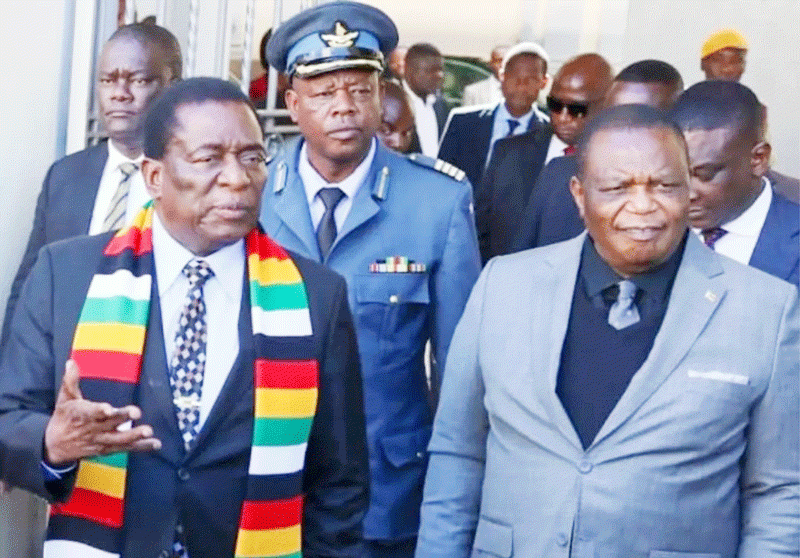
FOREIGN investors accounted for 98,8% of the country’s total projected investment of US$9,7 billion last year, thanks to the Zimbabwe Investment and Development Agency (Zida) investment drive.
Local investors contributed US$144 million of the total amount.
The southern African country last year issued licences with a projected investment value of US$9,7 billion, up 304% compared to the previous year, according to data contained in the latest Zida report.
In the period under review, the agency managed to attract investors from 47 countries compared to 2022, where licences were issued to investors from 33 countries including Zimbabwe.
During both periods, investors from China continue to dominate, having the highest number of investors with mining being their most preferred sector followed by the manufacturing sector.
However, China and Japan contributed the highest projected investment values in 2023.
In 2023, China had a projected investment value of US$3,930 billion, followed by South Africa with US$1,722 billion, Botswana at US$1,445 billion and the United Arab Emirates (US$1,201 billion).
Other notable investors were the United States of America, Netherlands, Cyprus, Mauritius, France, India, Japan among others.
- Zim headed for a political dead heat in 2023
- Record breaker Mpofu revisits difficult upbringing
- Tendo Electronics eyes Africa after TelOne deal
- Record breaker Mpofu revisits difficult upbringing
Keep Reading
“Looking ahead, the agency remains committed to driving investments and fostering growth. Embracing innovation and technology will be central to our success in the future,” Zida chief executive officer Tafadzwa Chinamo said in the report.
“We recognise the importance of sustainable developments through responsible investments, hence a renewed emphasis to attract socially responsible investors in line with regional and global trends.”
The country received 761 investment applications and out of this figure, 616 licences were issued. In 2022, the agency received a total of 562 applications and it issued 267 licences with a combined value of US$2,4 billion.
Last year, the agency renewed 415 licences, with an actual investment value of US$1,2 billion.
Of the total projected investment value in 2023, the energy sector attracted more investment of US$3,525 billion, followed by mining at US$2,602 billion.
Construction and services sectors attracted investment worth US$1,961 billion and US$1,276 billion respectively. Transport, agriculture and tourism attracted least investment.
Zida said the mining continued to draw the most investment, both in terms of number and projected investment value. In the fourth quarter of 2023, 76% of the projected investment value for all licenses were issued in the mining sector.
The report shows that in the fourth quarter of 2023, the agency received a proposal with a projected investment value of US$6,940 billion, for minerals trading and mining development, which is being reviewed.
The investment proposal came from Ajako United (Pvt) Ltd, which seeks to establish its operations in Harare.
Another proposal, with a project investment value of US$1,4 billion, came from Innermost Resources Zimbabwe (Pvt) Ltd, which seeks to invest in mining and processing of gold in Penhalonga, Turk Mine and Kwekwe.
“The projects are expected to eventually contribute to increasing the country’s gold production from the current 200 tons to 300 tons per year by 2025,” Zida said.
“The regional distribution of investments underscores a pronounced concentration in Harare Province, signifying a strategic allocation of capital towards this economic hub.
“Predominantly, the investment landscape in this province is characterized by a focus on the manufacturing and services sectors, indicating a deliberate effort to capitalise on the economic potential and business opportunities inherent in these industries.
“This targeted deployment of investments aligns with a nuanced understanding of the economic landscape, where Harare Province emerges as a pivotal centre for fostering growth and development.”
Zida said the inclination towards the manufacturing sector underscores a commitment to industrial activities, capitalising on the region’s infrastructure, skilled workforce, and logistical advantages.
“Simultaneously, the emphasis on the services sector indicates a recognition of the evolving dynamics of the contemporary economy, where service-oriented industries play a crucial role in driving innovation, enhancing efficiency, and meeting the diverse needs of a burgeoning consumer base,” it said.
“As investors strategically position themselves in Harare Province, they are poised to leverage the synergies arising from a robust ecosystem that facilitates collaboration, innovation, and sustained economic expansion.
“This strategic allocation not only reflects a keen understanding of the provincial economic landscape but also positions stakeholders to harness the full spectrum of opportunities inherent in both the manufacturing and services sectors.”
According to the report, the agency has issued a total of 1 083 new licences since its inception in 2020 and continues to put in place measures to improve investment attraction and facilitation in the form of investment promotion programs and improving its processes and procedures.
Since April 2023, the agency has been operating an online system for processing licence applications and handling investment inquiries.
“This has contributed to an increase in the number of licenced investors as shown in the table below where more projects were licenced in 2023 compared to 2022 every quarter and year to date,” it said.










